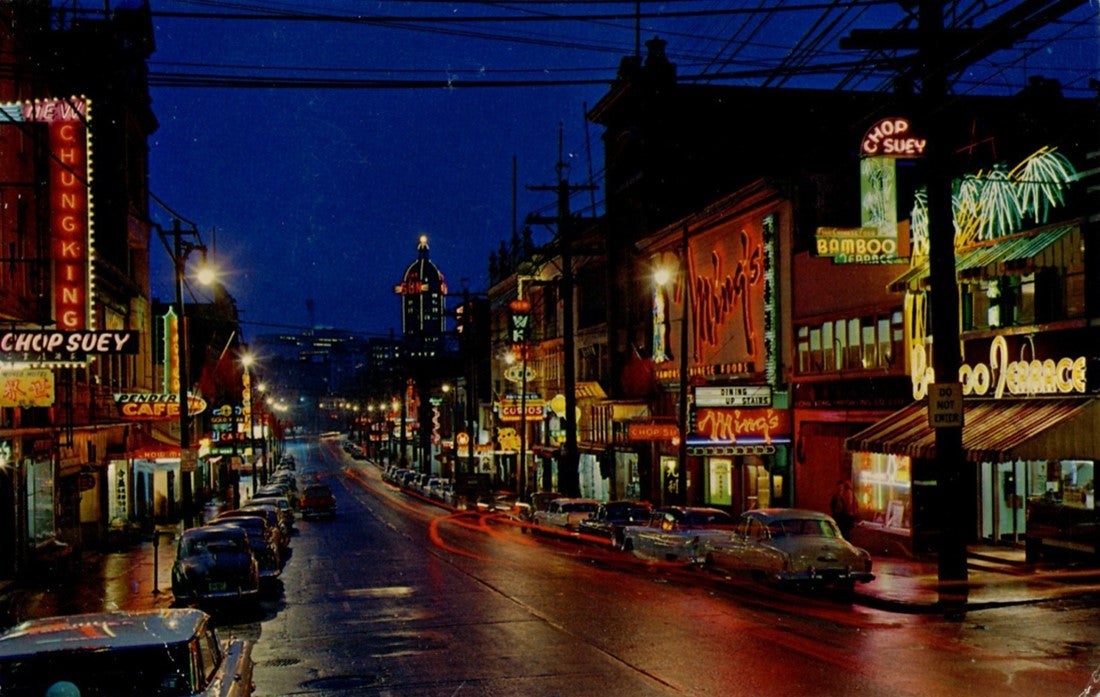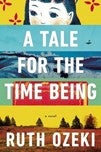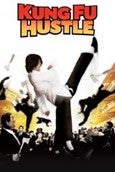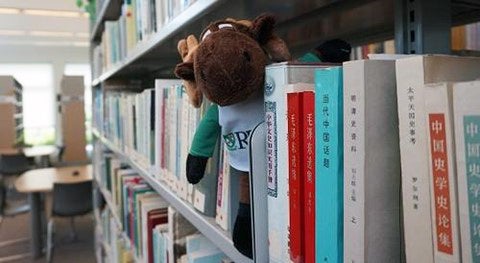
For much of the 20th century, North American and Western European culture dominated the global arts and culture landscape. Increasingly, the entertainment industries that thrive in Asia are becoming more prominent and mainstream with audiences of all languages and cultures: Bollywood is by far the world’s biggest film industry, Netflix has gotten into the game of producing anime and K-dramas, and YouTube is filled with videos of people from around the world dancing along to their favourite K-pop songs. Learn a little bit more about Asian arts and culture in today’s newsletter, and then dive a little deeper with our suggested library resources!
Learn more about Asian Heritage Month activities at University of Waterloo.
If you or someone you know is experiencing the impacts of anti-Asian hate and racism, you can get support from Waterloo’s Counselling Services, or visit Human Rights, Equity and Inclusion’s Anti-racism resources.
Arts and culture
Asian media
The prevalence of Asian popular media has increased throughout recent years, corresponding to the growing global connectivity. From the 1960s, Asian media outlets have worked to gain proportionate control against the Western media dominance. As a result, media like Bollywood, K-pop, and East Asian dramas have generated an enormous North American audience. The popularity of K-pop is a result of their unique performances, dance style, and meaningful lyricism. Many groups such as BTS delve into thoughtful topics within their lyrics, touching on important social issues and struggles that many other artists would not consider delving into. K-dramas showcase many unique plotlines and character arcs, providing new perspectives to their viewers. Bollywood has seen significant growth, producing over 1,500 films each year, many times more than the U.S. These films and dramas educate individuals on the culture, language, and societal norms they would otherwise not be exposed to. Nevertheless, cultural and language barriers continue to impact the global success of Asian media due to the enduring stereotypes and inequities within the media industry.
Stereotypes and cultural appropriation of Asian culture in Western media
Going beyond media established in Asian countries, Asian culture is represented in Western media as well. Asian communities are often subject to under-representation and/or stereotyping in media; these falsities perpetuate harmful stereotypes, creating one-dimensional characters that do not accurately portray the diversity within Asian groups. Specifically, a dominant stereotype in media depicts Asians as intelligent, awkward, and reserved. This superficial character type upholds the model minority myth that Asians are all successful and hardworking, lacking other personality traits. These stereotypes cause harm to the Asian population and other people of colour due to its underlying argument that racism does not exist in light of the success of Asian immigrants in Western countries.
Another problematic issue in the depiction of Asian culture in Western media is cultural appropriation. That is when the dominant Western culture takes elements from Asian cultures without consideration for the true meaning and significance of the cultural aspect, due to this systemic power dominance. Many Asian countries have traditional garments such as a Chinese qipao, a Japanese kimono, or an Indian sari. However, their cultural significance is often reduced to ‘oriental fashion’ when thoughtlessly worn as trendy items or inappropriately worn by people/characters. The fox eye ‘trend’ and yellow face are other examples of how media can use the power imbalances to take advantage of marginalized cultures.
Queer coding in anime
Anime is a recognizable form of animated cartoon originating from Japan. Over the years, anime has gained popularity in North America, attracting diverse viewers with many genres and animation styles. Using dramatic editing, facial expressions, and colours, Japanese anime has a distinct visual appeal. Building on this, queer coding is widely evident in anime series, as male characters are given more effeminate features, while female characters present more masculine features. Although not inherently positive or negative, queer coding can bring queer representation into media even without explicitly acknowledging the fact — one example of this is using nosebleeds to hint at sexual attraction between characters of the same sex. Therefore, the portrayal of these characters must understand the impact they may have.
Celebrating Asian culture in media
It is crucial to address the longstanding discriminatory and racist practices in the Western media industry. However, it is also essential to acknowledge the individuals who have broken through those barriers to create accurate representations of Asian culture in stories and those portraying the characters. In recent years, Asian-led movies and TV shows have become household names such as Minari, Parasite, Crazy Rich Asians, and the upcoming Shang-Chi and the Legend of the Ten Rings. These films have abandoned stereotypes to illustrate engaging stories that maintain the authenticity of their Asian characters. Sharing these under-represented stories on such a large scale can notably influence how people perceive the diverse Asian population. Deservedly, Chloe Zhao and Youn Yuh-Jung have made history with their Oscar 2021 awards for Best Director and Best Supporting Actress.
Further readings on Asian arts and culture
Fun fact
The verb ‘katsu’ means to win or be victorious, so katsudon is considered a good luck meal to eat the night before an exam, performance or interview. This has become such a popular trend in Japan that katsudon often appears as a minor character in many anime series, including Food Wars, My Hero Academia and, of course, Yuri!!! on Ice.
Recipes
Learn how to make the deliciously simple and heart-warming katsudon dish (sometimes referred to as pork cutlet bowls) from the Anime Kitchen on YouTube.
Puzzle
 This week’s puzzle is a postcard from 1960 of Vancouver’s Chinatown. Until the 1930s, Chinese residents were not able to purchase property outside of Chinatown. Instead of becoming overcrowded and poor, the community began to thrive, and it is a travel destination for many today.
This week’s puzzle is a postcard from 1960 of Vancouver’s Chinatown. Until the 1930s, Chinese residents were not able to purchase property outside of Chinatown. Instead of becoming overcrowded and poor, the community began to thrive, and it is a travel destination for many today.
"Postcard: Vancouver's Chinatown, 1960" by blizzy63 is marked with CC PDM 1.0
Recommended reads
 A Tale for the Time Being by Ruth Ozeki is a brilliantly inventive novel that brings together two stories from across the world. In Tokyo, Nao, a sixteen-year-old girl has decided that there is only one way to escape her classmates’ bullying and her aching loneliness. But before she ends it all she documents her great-grandmother’s life, a Buddhist nun whose lived for more than a century. Across the Pacific, Ruth, a novelist living on a remote island discovers a Hello Kitty lunchbox that has washed ashore. This lunchbox is filled with pages of handwritten letters and artifacts. Ruth is pulled into Nao’s life and is impacted in ways she can scarcely imagine.
A Tale for the Time Being by Ruth Ozeki is a brilliantly inventive novel that brings together two stories from across the world. In Tokyo, Nao, a sixteen-year-old girl has decided that there is only one way to escape her classmates’ bullying and her aching loneliness. But before she ends it all she documents her great-grandmother’s life, a Buddhist nun whose lived for more than a century. Across the Pacific, Ruth, a novelist living on a remote island discovers a Hello Kitty lunchbox that has washed ashore. This lunchbox is filled with pages of handwritten letters and artifacts. Ruth is pulled into Nao’s life and is impacted in ways she can scarcely imagine.
Film fun
 Kung Fu Hustle (2004). Set in 1940s Shanghai, this satirical martial-arts gangster film tells the story of poor village with some gifted locals, gangsters, and a wannabe gangster’s hero journey. A gem of a film that balances comedy, action, fantasy, and nostalgia from old-school martial arts films. Watch it now by logging into Criterion on demand using your library account!
Kung Fu Hustle (2004). Set in 1940s Shanghai, this satirical martial-arts gangster film tells the story of poor village with some gifted locals, gangsters, and a wannabe gangster’s hero journey. A gem of a film that balances comedy, action, fantasy, and nostalgia from old-school martial arts films. Watch it now by logging into Criterion on demand using your library account!
A lesson in wellness
This past year has taught us, more than ever, the importance of self-care and maintaining our mental health. Mindfulness techniques are a great way to reduce stress and build resiliency. Number six on our list of mindfulness exercises (PDF) is spending time in nature. The Japanese have a word for this: shinrin-yoku, roughly translated as ‘forest bathing’. Learn more about the evidence-based health benefits of shinrin-yoku in this review published in the Journal of Environmental Research and Public Health: Shinrin-Yoku (Forest Bathing) and Nature Therapy: A State-of-the-Art Review.
Support local Asian-owned businesses
Take advantage of the nice spring weather and get in your weekly shinrin-yoku by taking a stroll over to support an Asian-owned business. See our map of local Asian-owned business in the Kitchener-Waterloo area.


 This week’s puzzle is a postcard from 1960 of Vancouver’s Chinatown. Until the 1930s, Chinese residents were not able to purchase property outside of Chinatown. Instead of becoming overcrowded and poor, the community began to thrive, and it is a travel destination for many today.
This week’s puzzle is a postcard from 1960 of Vancouver’s Chinatown. Until the 1930s, Chinese residents were not able to purchase property outside of Chinatown. Instead of becoming overcrowded and poor, the community began to thrive, and it is a travel destination for many today. A Tale for the Time Being by Ruth Ozeki is a brilliantly inventive novel that brings together two stories from across the world. In Tokyo, Nao, a sixteen-year-old girl has decided that there is only one way to escape her classmates’ bullying and her aching loneliness. But before she ends it all she documents her great-grandmother’s life, a Buddhist nun whose lived for more than a century. Across the Pacific, Ruth, a novelist living on a remote island discovers a Hello Kitty lunchbox that has washed ashore. This lunchbox is filled with pages of handwritten letters and artifacts. Ruth is pulled into Nao’s life and is impacted in ways she can scarcely imagine.
A Tale for the Time Being by Ruth Ozeki is a brilliantly inventive novel that brings together two stories from across the world. In Tokyo, Nao, a sixteen-year-old girl has decided that there is only one way to escape her classmates’ bullying and her aching loneliness. But before she ends it all she documents her great-grandmother’s life, a Buddhist nun whose lived for more than a century. Across the Pacific, Ruth, a novelist living on a remote island discovers a Hello Kitty lunchbox that has washed ashore. This lunchbox is filled with pages of handwritten letters and artifacts. Ruth is pulled into Nao’s life and is impacted in ways she can scarcely imagine. Kung Fu Hustle (2004). Set in 1940s Shanghai, this satirical martial-arts gangster film tells the story of poor village with some gifted locals, gangsters, and a wannabe gangster’s hero journey. A gem of a film that balances comedy, action, fantasy, and nostalgia from old-school martial arts films. Watch it now by logging into Criterion on demand using your library account!
Kung Fu Hustle (2004). Set in 1940s Shanghai, this satirical martial-arts gangster film tells the story of poor village with some gifted locals, gangsters, and a wannabe gangster’s hero journey. A gem of a film that balances comedy, action, fantasy, and nostalgia from old-school martial arts films. Watch it now by logging into Criterion on demand using your library account!





